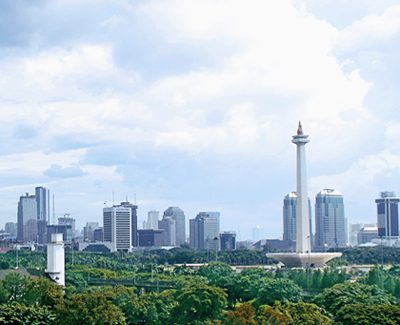Global cities keep momentum
Global cities continue to perform well as global wealth invests in safe havens in volatile times


The Knight Frank Prime Global Cities Index has risen by 1.1% in the three months to September, down from 1.4% last quarter. Prime prices across the 26 cities increased by 3% in the past year, and cities in Europe remain the weakest performers, recording a fall of 0.5% on average in the last 12 months
Jakarta (up 28.5%) was the strongest performer in the year to September. Fifteen of the 26 cities tracked by the Prime Global Cities Index (58%) recorded flat or positive price growth in the year to September, but over the last quarter 20 of the 26 cities (77%) have seen flat or positive growth - indicating an improving scenario.
Hong Kong, London and Beijing having been the strongest performers since mid-2009, recording price growth of 52.9%, 45.4% and 39.5% respectively. Meanwhile, five cities recorded double-digit price growth in the year to September; Jakarta, Dubai, Miami, Nairobi and London - a city from each of the five key world regions.
Although Asia heads the pack - Jakarta recorded 28.5% annual growth - the results this quarter suggest that demand for luxury homes is only loosely linked to the strength of regional economies (Asia Pacific has only two cities in the top ten compared to Europe's three). Instead, the flow of international wealth and the attitudes of HNWIs are increasingly influential.

* Subscribe to Country Life and get the Ipad edition at no extra cost
Cities such as Dubai, Miami, Nairobi and London are increasingly considered investment hubs for HNWIs in their wider regions. In the wake of the Arab Spring, Dubai has been seen as a relative safe haven for MENA buyers while Venezuelan and Brazilian investors have looked to Miami to limit their exposure to domestic political and economic volatility.
Not all prime residential markets are benefitting from the global economic uncertainty. In Paris, although prices held firm in the third quarter, sales activity was muted as buyers of all nationalities adopted a "wait and see" attitude. Vendors are unwilling to reduce prices until there is greater clarity from President Hollande and the Eurozone leaders in relation to the debt crisis.
Exquisite houses, the beauty of Nature, and how to get the most from your life, straight to your inbox.
Asia's prime markets look to be entering a period of more moderate growth due in part to the regulatory measures aimed at cooling prices and improving domestic affordability.
James Price of Knight Frank's International Residential Development team says: "Aside from London, it would appear the other strong performers are either those established international markets that experienced a lull but are now ‘kicking on' again (e.g. Miami, Dubai) or those that could be described as second tier international cities - strong established markets, but not global ‘gateway' cities (e.g. Zurich, Vienna, San Francisco), where interest has driven price rises from a lower base."
James continues: 'While some of the more traditional prime second-home markets are recording negative movement, this should not disguise their long-term popularity and strength, instead it suggests a cooling from previous higher levels.'

